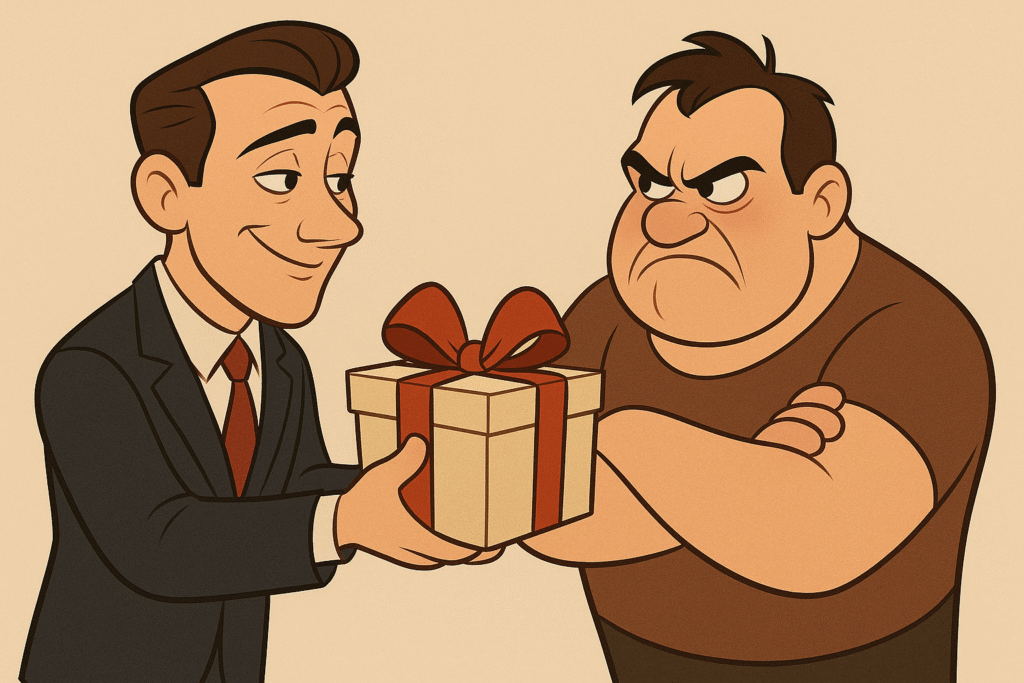
Sometimes the smartest business decision is giving your worst customer exactly what they want.
This goes against every entrepreneurial instinct, right?
We’re taught to stand firm on principles, maintain boundaries, and never reward bad behavior.
But here’s the uncomfortable truth about pursuing the Fave Effect: while you’re working to become someone’s true favorite, you must simultaneously protect that relationship from customers who actively undermine it.
In our hyperconnected world, one vindictive customer can inflict damage that extends far beyond their individual complaint — potentially poisoning the well for customers who might otherwise become genuine advocates.
I learned this lesson the expensive way decades ago.
A particularly difficult client demanded unreasonable concessions after we’d bent over backwards and delivered top-notch work.
Every fiber of my being wanted to hold the line on principle. So I did.
Then I watched him systematically trash our reputation across multiple review platforms, industry forums, and social networks. Years later, he still raged about it.
The cost of that revenge campaign — in lost prospects, damaged relationships, stress, and time spent managing the fallout — certainly dwarfed what it would have cost to simply give him the refund he demanded.
Strategic appeasement isn’t about rewarding bad behavior or enabling entitled customers.
It’s about recognizing when the cost of conflict exceeds the cost of capitulation — and when that conflict might interfere with your ability to serve the customers who truly appreciate exceptional treatment.
The calculation is brutally practical:
How much damage can this person inflict versus how much would it cost to make them disappear, satisfied?
Or, more importantly, how might their destructive behavior affect your capacity (and passion) to build those precious favorite relationships with worth-serving customers?
In I Need That, I discuss how the Fave Effect requires not just great customers, but protection from destructive ones. Sometimes that protection comes through boundaries and firm policies. Other times it comes through strategic generosity that transforms potential enemies into neutral parties.
Product Payoff: Think how Zappos famously empowered customer service representatives to make generous decisions without management approval, including paying for return shipping on items that technically shouldn’t qualify. While this occasionally enabled entitled behavior, it prevented the escalated conflicts that create lasting reputation damage.
Their policy of “making the customer happy at almost any cost” resulted in word-of-mouth marketing worth millions and prevented the negative reviews that could have undermined their growth. The few customers who did exploit their generosity cost far less than the positive buzz their policies generated among customers who became true advocates.
Action for today: Develop YOUR criteria for strategic appeasement decisions. When does a customer’s potential for damage exceed the cost of satisfaction? Create clear thresholds — financial limits, time investments, team impact—that help you quickly decide when to fight and when to fold.
Train your team to recognize the difference between customers worth converting and those worth dismissing gracefully, protecting your energy for building genuine favorite relationships.
Have you made a strategic decision to appease a terrible customer?
How did that work out?
Pop that reply arrow and share your experience balancing principles with practical damage control.
Or reach out to my team of product launch strategists at Graphos Product.
